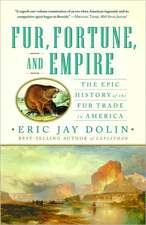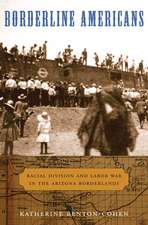The Lowland Maya Area: Three Millennia at the Human-Wildland Interface
Editat de Scott Fedick, Michael Allen, Juan Jim?nez-Osornio, A. Gomez-Pompaen Limba Engleză Paperback – 18 sep 2003
Integrating history, biodiversity, ethnobotany, geology, ecology, archaeology, anthropology, and other disciplines, The Lowland Maya Area is a valuable guide to the fascinating relationship between man and his environment in the Yucatán peninsula. This book covers virtually every aspect of the biology and ecology of the Maya Lowlands and the many ways that human beings have interacted with their surroundings in that area for the last three thousand years. You'll learn about newly discovered archaeological evidence of wetland use; the domestication and use of cacao and henequen plants; a biodiversity assessment of a select group of plants, animals, and microorganisms; the area's forgotten cotton, indigo, and wax industries; the ecological history of the Yucatán Peninsula; and much more. This comprehensive book will open your eyes to all that we can learn from the Maya people, who continue to live on their native lands, integrating modern life with their old ways and teaching valuable lessons about human dependence on and management of environmental resources.
The Lowland Maya Area explores:
- the impact of hurricanes and fire on local environments
- historic and modern Maya concepts of forests
- the geologic history of the Yucatán
- challenges to preserving Maya architecture
- newly-discovered evidence of fertilizer use among the ancient Maya
- cooperation between locals and researchers that fosters greater knowledge on both sides
- recommendations to help safeguard the future
As the editors of The Lowland Maya Area say in their concluding chapter: “If we are to gain global perspective from the changing Maya world, it is that understanding space and time is absolutely critical to human persistence.” Understanding how the Maya have interacted with their environment for thousands of years while maintaining biodiversity will help us understand how we too can work for sustainable development in our own environments.
Preț: 803.69 lei
Preț vechi: 883.18 lei
-9% Nou
Puncte Express: 1206
Preț estimativ în valută:
153.79€ • 167.72$ • 129.67£
153.79€ • 167.72$ • 129.67£
Carte tipărită la comandă
Livrare economică 24 aprilie-08 mai
Preluare comenzi: 021 569.72.76
Specificații
ISBN-13: 9781560229711
ISBN-10: 1560229713
Pagini: 690
Dimensiuni: 151 x 212 x 44 mm
Greutate: 1.07 kg
Ediția:New.
Editura: CRC Press
Colecția CRC Press
Locul publicării:Boca Raton, United States
ISBN-10: 1560229713
Pagini: 690
Dimensiuni: 151 x 212 x 44 mm
Greutate: 1.07 kg
Ediția:New.
Editura: CRC Press
Colecția CRC Press
Locul publicării:Boca Raton, United States
Public țintă
ProfessionalCuprins
About the Editors , Contributors , Foreword , Acknowledgments , Part I: Introduction , Chapter 1. Research Challenges for the Lowland Maya Area: An Introduction , Part II: The Biological and Physical Environment , Chapter 2. The Changing Global Environment and the Lowland Maya: Past Patterns and Current Dynamics , Introduction , Past Environments and the Yucatán Peninsula , The El Edén Tropical Seasonal Forest: Current Ecosystem Structure , Ecosystem Dynamics: Current versus Past , Current and Projected Environmental Change and the Yucatán Peninsula , Conclusion , Chapter 3. In the Beginning: Early Events in the Development of Mesoamerica and the Lowland Maya Area , Introduction , Geologic History , Climatic History , Vegetational History , Conclusion , Chapter 4. Paleolimnological Approaches for Inferring Past Climate Change in the Maya Region: Recent Advances and Methodological Limitations , Introduction , Theoretical Basis for Isotope-Based Paleoclimate Studies , Choosing a Study Site , Complementary Sediment Proxies , Results and Discussion , Chapter 5. Rhythms of Precipitation in the Yucatán Peninsula , Introduction , Experimental Details , Normal Conditions for the Yucatán Peninsula , Yucatán in the Context of SPI-12 of All Mexico , Periodicity , Typical Patterns , Conclusion , Chapter 6. Structure and Diversity of the Forests at the El Edén Ecological Reserve , Introduction , Study Area , Methods and Materials , Results , Discussion , Chapter 7. Hydrogeology of the Yucatán Peninsula , General Geology of the Northern Yucatán Peninsula , Soils , Regional Hydroge
Notă biografică
Scott Fedick, Michael Allen, Juan Jimmez-Osornio, A. Gomez-Pompa
Descriere
Integrating history, biodiversity, ethnobotany, geology, ecology, archaeology, anthropology, and other disciplines, The Lowland Maya Area is a valuable guide to the fascinating relationship between man and his environment in the Yucatán peninsula. This book covers virtually every aspect of the biology and ecology of the Maya Lowlands and the many ways that human beings have interacted with their surroundings in that area for the last three thousand years. You'll learn about newly discovered archaeological evidence of wetland use; the domestication and use of cacao and henequen plants; a biodiversity assessment of a select group of plants, animals, and microorganisms; the area's forgotten cotton, indigo, and wax industries; the ecological history of the Yucatán Peninsula; and much more. This comprehensive book will open your eyes to what we can learn from the Maya people—people who continue to live on their native lands, integrating modern life with their old ways and teaching valuable lessons about human dependence on and management of environmental resources.











![The Civil War Boxed Set [With American Homer]](https://i0.books-express.ro/bt/9780679643708/the-civil-war-boxed-set-with-american-homer.jpg)


